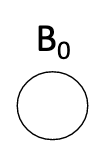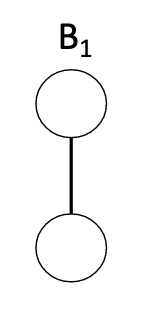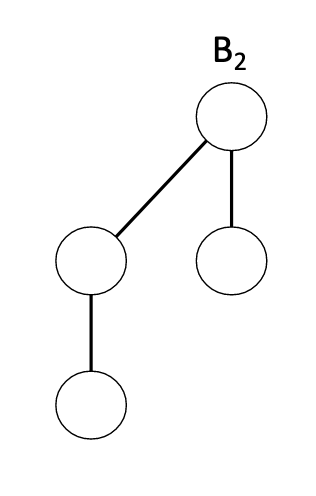Mergable Priority Queues
- what if we wanted to merge two priority queues?
- normal min-heap implementation does not support this in a smart way
- with min-heap data structure, must take all elements from both and construct new heap from scratch
Operations
insert(A, x)- add an element
x
- add an element
min(A)- return the highest priority element
extract_min(A)- remove and return the highest priority element
union(A, B)- create a new heap with all the elements of both
AandB
- create a new heap with all the elements of both
decrease_key(A, x, k)- decrease the key of
xtok
- decrease the key of
remove(A, x)- remove
xfrom the heap entirely
- remove
Binomial Trees
$B_k$ Trees defined recursively:
In general, create $B_{n+1}$ tree by taking two $B_n$ trees, $A$ and $B$ and making the root of $B$ the first child of the root of $A$
Properties of $B_k$
- number of nodes is $2^k$
- height of tree is $k$
- number of nodes with height $h$ is binomial coefficient $\displaystyle {k \choose h}$
Binomial Forest of size $n$ ($F_n$)
A sequence of $B_k$ trees with $k$ strictly decreasing with $n$ total nodes
- this is always possiblle because we can always represent $n > 0$ in binary, so we can always write it as a sum of unique powers of 2
- if $\alpha(n)$ is the number of 1s in the binary representation of $n$
- $F_n$ has $\alpha(n)$ trees
- $F_n$ has $n - \alpha(n)$ edges
- $\alpha(n) \in \mathcal O(\log(n))$
Min Binomial Heap
A min binomial heap is a binomial forest where:
- each node of $F_n$ stores one element
- each tree in $F_n$ is min-heap ordered
Implementation
Storage
- edges as drawn are not exactly stored as pointers
- each node stores pointers to:
parentleft_childright_sibling
- tree stores pointer to
head, aka rightmost top level node
Merging min binomial heaps of same size $P_k$ and $Q_k$
- if
Pk.root < Qk.rootthen makePk.left_child = Qk.root, otherwiseQk.left_child = Pk.root- change parent pointers similarly
Union of min binomial forests (union(A, B))
(works exactly like algorithm for addition of binary numbers)
- start at smallest $B_k$ tree in both
- if tree is only in one forest (or is carry), then keep as-is in the union forest
- if there are $B_k$ trees with same size in both, merge them to get a $B_{k+1}$ tree
- carry the new $B_{k+1}$ tree, repeat from step 2
for $\vert A \vert \leq n$ and $\vert B \vert \leq n$, the complexity of union(A, B) is $\mathcal O(\log(n))$
insert(A, x)
Make a new binomial forest with a single $B_0$ tree which stores x, then “add” it to A
def insert(A, x):
b = new B_0 Tree
b.insert(x)
B = new BinomialHeap(b)
A = union(A, B)


